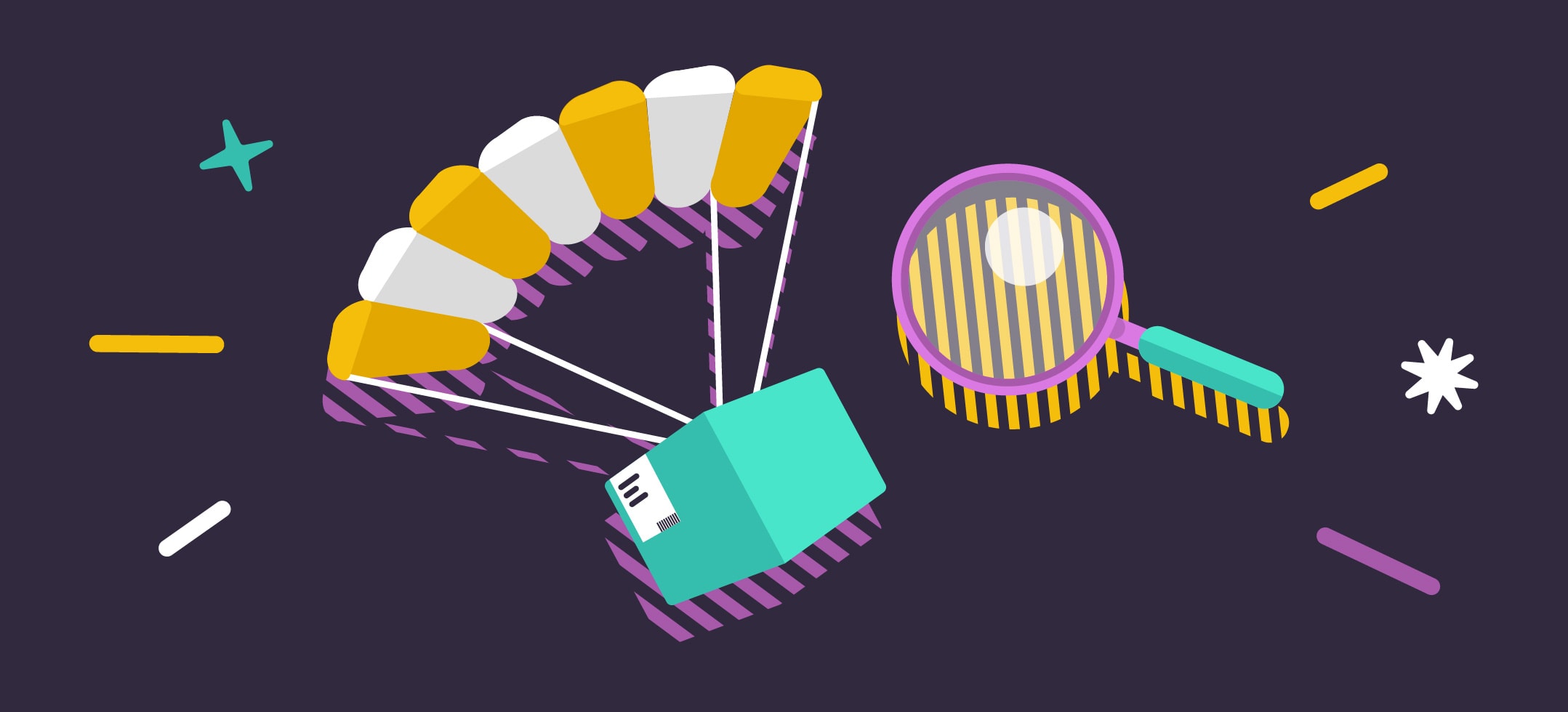The dropshipping business model comes with obvious benefits. For starters, you don’t need to spend a fortune upfront or stock inventory. That was a game-changer for me when I started.
But like most things, it’s not perfect.
The biggest con with dropshipping is not owning the fulfillment process. You’re trusting third-party suppliers with your customers’ experiences — and that can go south quickly.
So before worrying about which supplier to use or what shipping time to advertise, there’s one key question I ask myself before selling anything:
Will this product actually sell?
And answering that question the right way has saved me thousands in ad spend and months of frustration.
How to Find Dropshipping Products That Sell
There are two ways to approach product selection: throw spaghetti at the wall or work with a repeatable, strategic method. After burning through several “test” products, I chose the second path.
Let’s break down the exact factors I use to spot winning products — and just as importantly, how to avoid losers.
Popular Products: Easy to Sell or Just Overcrowded?
Popular products look appealing. Everyone’s selling them, so they must be working, right? Not always.
I’ve tested dozens of trending products across Amazon, eBay, and Etsy — and here’s what I found.
Pros of Popular Products
- Demand is proven: People are already buying them.
- Supplier access is easier: Most are widely available through major sourcing apps.
- Marketing content is abundant: Influencers, reviews, and ad angles are everywhere.
Cons of Popular Products
- Saturated competition: You’re often a small fish in a very large pond.
- Lower profit margins: Price wars kill your margins.
- Harder to stand out: You need a strong brand or unique spin.
Examples:
| Product Type | Demand Level | Competition | Margin |
|---|---|---|---|
| Graphic T-shirts | High | Very High | Low |
| Phone cases | High | High | Low |
| Resistance bands | High | Medium | Medium |
Note: If you’re still tempted by T-shirts, check out the 10 Best T-Shirt Dropshipping Services to at least find a supplier that can offer better margins or print quality.
Verdict:
Popular products are not a guaranteed win. They work best if you can niche down, offer customization, or dominate with marketing.
Niche Products: Smaller Market, Bigger Wins
The flipside is going after lesser-known products with highly specific audiences. These have made me far more money in the long run.
Think: stuff only certain people are searching for — but they really want it.
Pros of Niche Products
- Low competition: You don’t have to fight off big-box sellers.
- High perceived value: Specialty products can command higher prices.
- Passionate buyers: These customers often know exactly what they want.
Cons of Niche Products
- Smaller market: Lower traffic overall.
- Harder to find: You’ll need to dig deeper to uncover demand.
- More upfront research: Success depends on understanding your buyer.
Examples of Niche Dropshipping Products:
- Bulletproof vests
- Paintball gear
- Underwater diving equipment
- Home fermentation kits
- Tactical dog harnesses
Check out how I discovered my own niche in this guide: How I Chose the Niche for My Store
Verdict:
Niche products are your secret weapon. They take more work, but they let you operate in your own lane — no price wars, no generic stores.
The Ideal Price Point: Where Profit Meets Volume
One of the fastest ways I’ve killed my own margins? Selling products that were too cheap.
People often chase $9.99 items thinking they’ll sell more, but unless you’re doing massive volume, the math doesn’t work.
Here’s what I’ve found works best:
Sweet Spot: $25–$60
Why?
- Leaves room for ads and shipping
- Feels affordable to most customers
- Low enough not to cause purchase hesitation
Price Range vs. ROI Table:
| Product Price | Average Ad Cost | Ideal Profit Margin | Worth It? |
|---|---|---|---|
| $10–$20 | $5–$10 | <20% | No |
| $25–$60 | $10–$20 | 30%+ | Yes |
| $70+ | $20–$30+ | 40%+ | Maybe — only for niche |
Here’s a deeper dive into Product Pricing Strategies if you want to go full nerd mode.
Verdict:
Stick to mid-ticket products. Anything under $20 is a race to the bottom. Anything above $70 requires heavy lifting and high trust.
Profit Margins: Don’t Settle for Less Than 30%
The whole reason I got into dropshipping was to generate profitable, scalable income.
But I’ve learned that even if a product sells, it doesn’t mean it’s worth selling.
Use this simple checklist:
Minimum Viable Margin = 30%
- Covers ad costs
- Covers transaction fees
- Leaves you with actual take-home profit
How to Estimate Profit Margin:
- Product Cost: $15
- Shipping: $5
- Ad Spend per Sale: $10
- Selling Price: $40
Profit = $10 (25%) → Not enough.
I’d either raise the price or cut costs.
Verdict:
A “winning product” that only makes you $2 per sale is not winning. I shoot for at least $12–$15 profit per sale, minimum.
Supplier Reputation: Trust, Speed & Accountability
A good product with a bad supplier is a guaranteed refund nightmare.
I learned this the hard way after using a flashy product from an unvetted AliExpress seller. Late shipping, poor packaging, and zero support.
Here’s how I source smart now:
Option 1: Use Vetted Platforms
- AutoDS
- Spocket
- Modalyst
These services offer pre-screened suppliers who already understand dropshipping. Plus, many ship from US/EU warehouses.
Option 2: Manual Vetting
If I go the AliExpress route, I manually check:
- 4.7+ rating
- 500+ orders
- Good customer reviews
- Responsive support team
- Clear shipping timelines
Need a deeper guide? Read: Dropshipping Made Easy (With $0 Budget)
Supplier Comparison Table:
| Platform | Pros | Cons |
|---|---|---|
| DSers | Easy to use, trusted | Limited to AliExpress mostly |
| AutoDS | Bulk automation | Paid plans needed |
| AliExpress | Massive selection | Quality varies wildly |
Verdict:
The right supplier makes your life 10x easier. If you don’t trust them to ship on time, don’t work with them.
Your Personal Experience = Your Edge
Some of the best products I’ve sold came from hobbies I already had.
I was into drones before dropshipping, so I knew the pain points beginners faced. That meant I could write better product pages, choose better upsells, and support my customers with actual answers.
How Your Experience Helps:
- You understand your customers
- You know what to upsell
- You can answer questions in real time
- You can spot fakes or low-quality suppliers instantly
Great Niches for Personal Knowledge:
- Fitness (trainers, lifters, yoga)
- Beauty/skincare (licensed professionals)
- Outdoor gear (campers, survivalists)
- Tech accessories (gamers, creators)
Verdict:
Sell what you know. If you’re into it, your marketing will naturally be better.
Storytelling Sells More Than Features
This took me a while to grasp. Features don’t sell — stories do.
I’ve had more conversions from describing how a product fixed a problem than from listing 10 bullet points.
How I Use Storytelling in Product Pages:
- Paint a clear before-and-after scenario
- Include real customer reviews as quotes
- Add UGC-style photos or short videos
- Use relatable pain points to connect emotionally
Need inspiration? Check out Visual Storytelling for Ecommerce
Sample Copy (For a Neck Massager):
“I used to get a tension headache by 3 PM every day. After using this for just 10 minutes during lunch, I haven’t needed Tylenol in weeks.”
Verdict:
If you can tell a better story than your competitors, you can sell the same product — for more — and outsell them.
Finding Dropshipping Suppliers: Short vs. Long Route
Once you’ve picked a product, you need the right supplier. Here’s how I do it:
The Short Way
Use a sourcing tool like AutoDS for Shopify. These apps let you:
- Search for products
- Vet suppliers automatically
- Automate uploads and order fulfillment
The Long Way
Go to AliExpress and search manually.
- Browse best sellers
- Check reviews and ratings
- Contact suppliers to confirm policies
- Manually upload listings to your store
Supplier Checklist:
- Ships within 5–10 days
- Accepts returns/refunds
- Offers tracking numbers
- Communicates within 24 hours
Use Sourcelow’s Supplier Directory for verified vendor lists.
Verdict:
If you’re new, go short route. If you’re scaling and want control, go long.
Final Thoughts
Finding dropshipping products that sell isn’t about luck. It’s about using a clear system: test demand, check your margins, work with suppliers you trust, and pick products you actually understand.
The good news? If something flops, you can pivot fast.
That’s the power of dropshipping — and why the right product can change everything.






